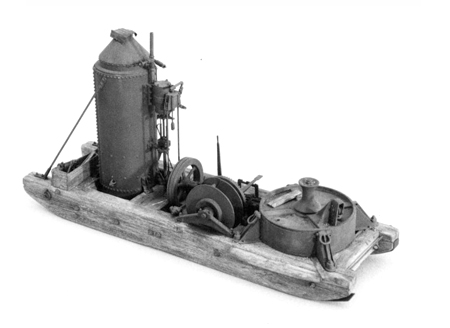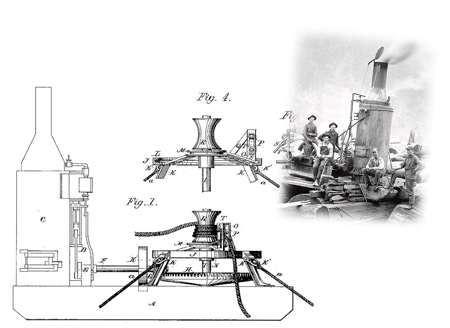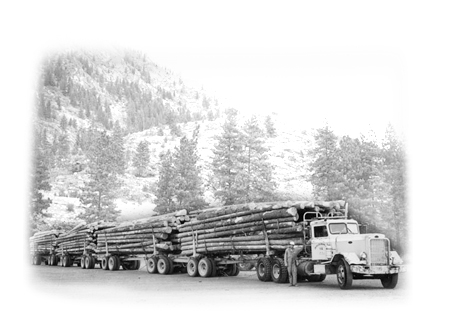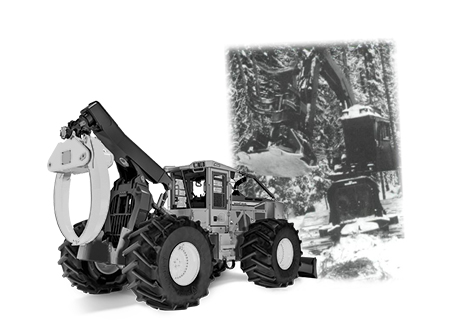Forestry Equipment
Here is an Outlook at the History of Forestry Equipment
 Forestry machines and instruments have come a long way since the times when the ax and the pick were the only tools used by people. Mechanization was introduced late in the 19th century. The steam donkey was invented in 1881 by the Dolbeer and Carson Lumber Company – John Dolbeer introduced the logging engine. When the internal combustion engine was introduced, the steam donkey became obsolete. Trucks and heavy cutting machinery came to the scene much later.However, steam donkeys were of great use, as they powered other pieces of equipment, such as cranes, pile drivers, slide-jammers and cherry pickers.
Forestry machines and instruments have come a long way since the times when the ax and the pick were the only tools used by people. Mechanization was introduced late in the 19th century. The steam donkey was invented in 1881 by the Dolbeer and Carson Lumber Company – John Dolbeer introduced the logging engine. When the internal combustion engine was introduced, the steam donkey became obsolete. Trucks and heavy cutting machinery came to the scene much later.However, steam donkeys were of great use, as they powered other pieces of equipment, such as cranes, pile drivers, slide-jammers and cherry pickers.
At first, logging equipment came down to manual gang saws, and logs were transported using sleighs or river downstreams.
The First Steps
 Skids were invented for logs to be moved. They were basically poles cross-laid on trails. The above mentioned steam powered winch, the ‘donkey’, made that process easier. Logs were moved with less effort using cable.
Skids were invented for logs to be moved. They were basically poles cross-laid on trails. The above mentioned steam powered winch, the ‘donkey’, made that process easier. Logs were moved with less effort using cable.
By the end of the 19th century, trees were still cut using only rotary and gang saws, and mills featured band saws. Horse-drawn logging sleighs were used by the dawn of the 20th century when self-propelled vehicles and trucks slowly took their place. The logs had to be transported either to a river or a railroad before being sent to the mill.
The first articulated truck with a trailer was launched in the 1920s but another decade passed until a timber hauler was designed and became relatively popular. Peterbilt was founded in 1939 by T.A. Peterman who later purchased brands like Fageol and Waukesha, whose experience he used to design logging trucks which set today’s industry standards.
The Forest Harvester
 The forest harvester was initially popular in Finland and Sweden but even before that, The Mammoth Tree Shears, U.S.-based company, produced a machine with tracks capable of shearing trees with trunks that were up to 30 inches in diameter, but it was nothing close to a forest harvester. The first design that is more or less the same today was introduced in the beginning of the 70s –a self-propelled machine produced by Sakari Pinomaki under his brand PIKA. SP Maskiner showed the first single grip harvester in the early 80s in Sweden. These machines were the best solution for plantation forest harvesting.
The forest harvester was initially popular in Finland and Sweden but even before that, The Mammoth Tree Shears, U.S.-based company, produced a machine with tracks capable of shearing trees with trunks that were up to 30 inches in diameter, but it was nothing close to a forest harvester. The first design that is more or less the same today was introduced in the beginning of the 70s –a self-propelled machine produced by Sakari Pinomaki under his brand PIKA. SP Maskiner showed the first single grip harvester in the early 80s in Sweden. These machines were the best solution for plantation forest harvesting.
For a long period of time, trees near waterways were the first to be cut, but soon the need for transportation become an urgent matter. Before the invention of the internal combustion, domestic animal-drawn sleighs were the solution. After the steam donkey period passed, it was time for the logging truck to be introduced.
The U.S. was among the first places where trucks were used. After WWI ended, a plethora of military trucks were transformed and used as logging trucks.
Trucks became less and less primitive and in the 1930s their engines were significantly improved. A big improvement was the introduction of pneumatic tires. Around that time, trucks became just as important to the logging industry as trains were. WWII played another key role in truck design evolution.
The Evolution of the Skidder
 Skidders were also pulled by domestic farm animals at first. This lasted until the 1920s when gasoline-powered machines slowly began to replace animal power and crawlers were introduced. These machines were equipped with winches allowing for the logs to be lifted much easier than before. Small trailers called ‘bummers’ were used as well. The forwarder was introduced later is a more practical machine, because it can carry
Skidders were also pulled by domestic farm animals at first. This lasted until the 1920s when gasoline-powered machines slowly began to replace animal power and crawlers were introduced. These machines were equipped with winches allowing for the logs to be lifted much easier than before. Small trailers called ‘bummers’ were used as well. The forwarder was introduced later is a more practical machine, because it can carry
Naturally, the initial design of the mechanical skidders featured a steam engine. They were more effective than the steam donkeys, but some had basically the same function. One of the first fully functional machines of this kind was the Clyde Skidder, launched in the early 1920s.
Despite the development of forestry equipment, using these machines was still extremely dangerous. Some manufacturers combined the function of the skidder with a loader, and the loader cables reached as long as five miles in specific places like New Zealand.
The Equipment Used Today
Brands like John Deere, Komatsu, Caterpilar and Ponsse have decades of experience in producing forestry equipment. The machinery used today is much more advanced. It uses state-of-the-art technology and it is many times safer than the equipment used in the first few decades of the 20th century. Today’s machines are much more efficient, too.
Harvesters, for example, are built on different platforms such as walking, track or wheeled excavators equipped with modern diesel engines. Most of the modern day machines features a safe and comfortable environment for the operator – a fully enclosed cab. Among the essential forestry equipment used today, you will find feller bunchers – machines used for timber gathering, as well the above mentioned skidders which pull the cut logs out of the forest. Loader come in next – they collect the timber and load it on timber trucks. Some of the rest of the most popular machines include forwarders, borers, mulchers and debarkers.